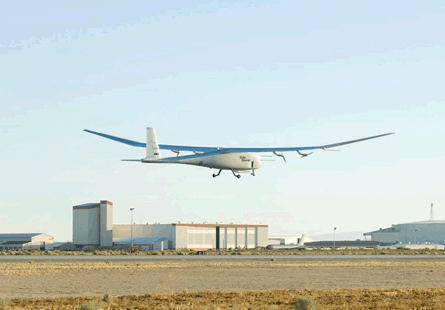AeroVironment launched flight tests of a new class of high-altitude aircraft called Global Observer on 5 August at Edwards AFB, California.
The unmanned aircraft system is designed to remain airborne for five to seven days, performing surveillance and communications missions, and with a 4h flight using battery power only.
Batteries will continue to power the Global Observer during the flight-test phase, although the aircraft was designed to burn liquid hydrogen to achieve long-endurance flight, says vice-president investor relations Steve Gitlin.
 |
|---|
© Aeroviroment |
AeroVironment is building three Global Observers to deliver to the US military for an operational assessment that starts after the flight-test phase. Gitlin declines to provide a specific timeline, citing uncertainties with availability and weather on the Edwards test range.
It is also not clear if the Global Observer has continued to fly after the first flight, with Gitlin saying only: "We haven't announced any subsequent flights."
The UAS is designed to stay airborne for up to seven days carrying a 172kg (380lb) payload at altitudes between 55,000ft (16,780m) and 65,000ft. From that distance, the aircraft's sensors can monitor an area spanning a diameter of about 965km (600 miles).
Hydrogen fuel is burned by a gasoline engine to drive an electrical generator, which powers two engines, flight controls and a 2.8kW package of mission systems.
Source: Flight International
















